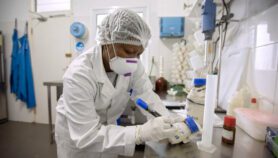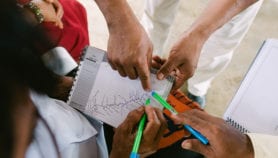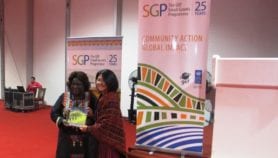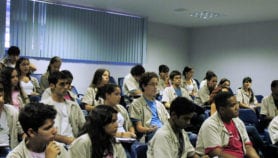Send to a friend
The details you provide on this page will not be used to send unsolicited email, and will not be sold to a 3rd party. See privacy policy.
Two centuries ago the Ottoman rulers of Turkey adopted technology, management and methods of learning from Europe. That experience has lessons for today’s developing countries, says Ekmeleddin Ihsanoglu.
Two hundred years ago, the rulers of the Ottoman empire looked to acquire technology, education and management systems from the countries of Europe. However, these efforts lacked one critical component of technology transfer, without which no developing country can hope to become scientifically advanced.
The missing component is the development of a culture of research and inquiry. It is worth retelling the story of how the importance of such a culture dawned relatively late in Ottoman history, and the implications of this for today’s developing nations.
Military technology
The Ottoman state emerged on the world scene at the turn of the fourteenth century. Six hundred years later it had left its footprints on the lands of the former Byzantine Empire, in Arabic-speaking countries and in central Europe.
Science and learning flourished throughout the period of empire, but particularly in its early centuries. Ottomans had contributed to the development of hospitals and healthcare, and witnessed advances in medicine, mining and military technology. They also set up a leading observatory in Istanbul and had established more than 300 centres of learning known as medreses. Students from all over the world came to study and carry out research in arithmetic, astronomy, philosophy and faith (known as the ‘religious sciences’).
But by the seventeenth century, the Ottomans, through reports sent by their ambassadors in Europe as well as translations of important texts from Western languages, realised that Europe had developed a greater sophistication in its technology and techniques of education and learning. They set about finding out how to adopt some of these newer ways.
They were, for example, fascinated by European military technology. From the empire’s earliest days the Ottomans had wanted to learn about handguns and cannons, which they discovered were being made in Bosnia and Serbia. They later employed experts from these countries as well as from England, France and the Netherlands to help them manufacture weapons and train their own technical staff.
The Ottomans also wanted to learn the new science of military organisation and strategy. They established centres for military education and training and reorganised their armies into officers of different ranks and military, medical, educational and administrative departments. Ottoman military advisors were often of European origin, or European converts to Islam.
Europe also provided new models for organising secondary and higher education. Up until the seventeenth century, the dominant model of learning found throughout the Ottoman empire was based on the master-apprentice relationship. This was a personalised form of learning in which a student graduated only after a master considered him ready to leave the school. The student would be given a licence, known as an icazet (literally, permission), which would allow him to take on students of his own. The master would derive his authority from his own master through a chain of scholars leading to the Prophet Muhammad. This system is still used in the teaching of religious education in many Muslim countries to this day.
But educational systems in Europe had gone beyond this model and many European-style schools were beginning to appear in Ottoman member states, often as part of missionary activity. The Ottomans set about building schools as well as institutions of advanced learning, such as medical schools, on similar lines — partly to counter foreign and missionary influence in the empire, but partly out of recognition that their own public educational systems needed updating.
The new educational institutions were organised by separating students according to age, employing teachers for specific subjects, organising teaching according to subject syllabuses, conducting qualifying examinations for students and sending teachers abroad for further education and training in the new disciplines.
The first four Ottoman-era students to go abroad went to France in 1830 to study military subjects. Nine years later, 36 students were sent to London, Paris and Vienna to study engineering.
Research ignored
Yet despite their close observation of European science and technology, and their attempts to organise their own learning along European lines, the Ottomans failed to discover that European science and technology is based on supporting and promoting a culture of research. The connection between research and technology was almost entirely missing in Ottoman technology transfer until the mid-1800s.
One insight into this comes from the Turkish equivalent of the word ‘science’, which is fen. Even in the first decade of the twentieth century, fen meant techniques rather than research, knowledge or inquiry. Similarly, modern technology meant being able to manufacture and use instruments that were made and used in developed countries — it did not necessarily mean having the ability to innovate and develop your own methods and products.
Another insight comes from the establishment of the Imperial Naval Engineering College in 1773, perhaps the first modern technical institution in the Ottoman empire. The four-year curriculum included practical aspects of engineering such as arithmetic, astronomy, ballistics, geometry and hydraulics. Subjects such as physics, chemistry and other natural sciences were not in the curriculum, and neither was metallurgy, essential for a proper understanding of civil and mechanical engineering.
Perhaps most telling of all is the fact that no research was carried out in the first 100 years of the engineering college’s existence. Students who wanted to do research had to go to Europe. Promoting a culture of research is a lesson that the Ottomans began to take on board in the mid-1800s with the setting up of scientific societies and more modern universities.
It is now widely acknowledged that effective technology transfer needs a body of people who are familiar with the tools of inquiry and research; merely purchasing technologies from abroad and training people in their use is not enough to become a scientifically advanced nation.
Ekmeleddin Ihsanoglu is secretary-general of the Organization of the Islamic Conference and a former president of the International Union for the History and Philosophy of Science.
This article is part of a Spotlight on The way ahead for Islamic science.













